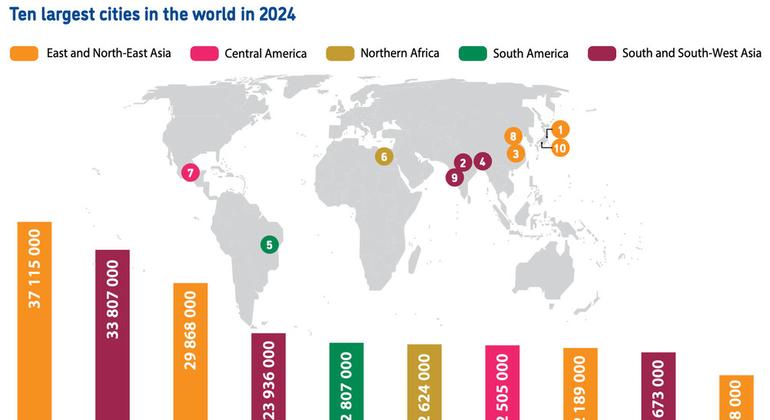Don't Miss Our Holiday offers - up to 50% OFF! & More..


The metropolis of Asia, the climate and the challenges of the population at the intersection trapped at the intersection – eSHOP24X7
These urban giants have been seen as a symbol of opportunity and progress for a long time, but now there is a danger that economies are retreced.
The United Nations Regional Development Branch – Espop has warned in a new report that if immediate and inclusive measures are not taken, they can increase stress inequality, put extreme load to public services and make social and environmental stress deeper.
In response to this, the executive secretary of SEPAP, Armada Salasiah, demands a new structure of the city that gives priority to equality and tolerance.
He wrote in the report of the report: “The 2030 Agenda route passes through the entire human cities and human settlements for sustainable development.”


It has emphasized the need for decisive and inclusive action.
For -Touching Mercury
The climatic crisis is pushing many cities in Asia to its tolerance.
In 2024, a record temperature was recorded in the south and southeast of Asia, from Dhaka and Delhi to Nompenn and Manila, which led to pressure on infrastructure and medical care systems.
The city becomes more heated than the “urban effect of summer island”, the rural areas around it. This effect is worsening these conditions, especially people living in the informal settlements of the elderly and congested, whose income is also the lowest.
Between 2000 and 2019, approximately half of the deaths related to global heat occurred in Asia and the Pacific region. With the increase in temperatures and the reduction of lush green places, the risks are increasing.
Some cities are already investing in innovative solutions, to adapt to climatic extremes.
In the new Shanghai district affected by floods, the authorities have retaliates with the real -time flood prognosis and the initial warning system for more than 1,200 square kilometers of area.
By integrating the system, the weather forecast and the hydrological data, it allows to simulate flood incidents, which gives local agencies a significant time to take reactive measures.
Increased increase in the old population
Meanwhile, there is a deep population change in the region. By 2050, it is estimated that the number of older individuals in Asia and the Pacific region will reach one billion 30 million rupees, which will be almost double the 2024 figures.
As the birth rate and migration from rural areas fall, the population of cities is being filled with the elderly and, in some cases, the cities have begun to be reduced. East Asia is experiencing this where “reduced cities” are seen.
This trend is increasing pressure on city planners, to meet the needs of ancient residents, adapt to infrastructure, medical care and public services, many of which live alone. However, most cities are less ready to face this challenge.


Expansion of informal settlements
The third trend is rapidly increasing informal settlements and marginal neighborhoods.
Due to the increase in resident prices and salary stability, millions of people are being pushed to low neighborhoods and irregular mohallas. These areas often face climatic tremors first, while these areas are available at the end of services such as hygiene or emergency relief.
The report establishes: “When the housing site becomes an object instead of establishing or living, this situation generates systemic risks for urban economies and expansion to national and even global economies.”
Turn risks into opportunities
Espap, despite the challenges, emphasizes that the city has reached the central importance for the sustainable future of Asia.
The report requires integrated urban planning, a solid local data system and diverse financing, that is, the availability to convert risks into opportunities, so that the city can achieve tolerance, promote equality and sustainable development.
The report also urges countries to strengthen regional cooperation and city network to share solutions.







